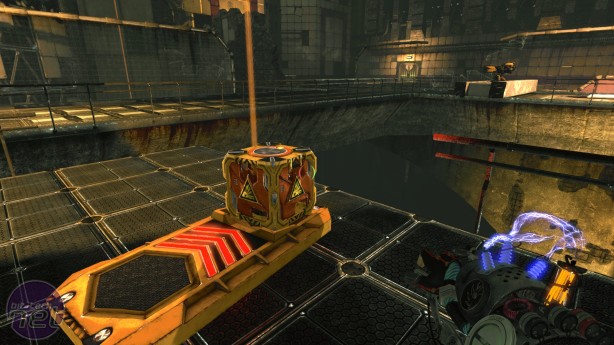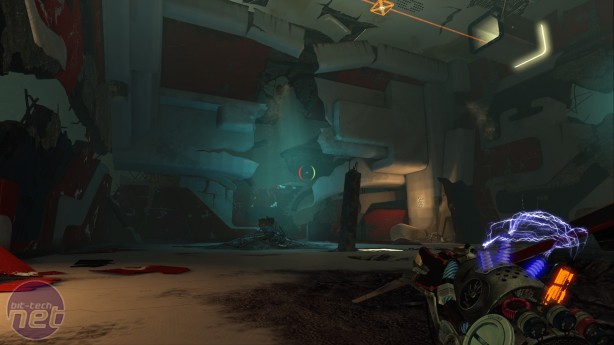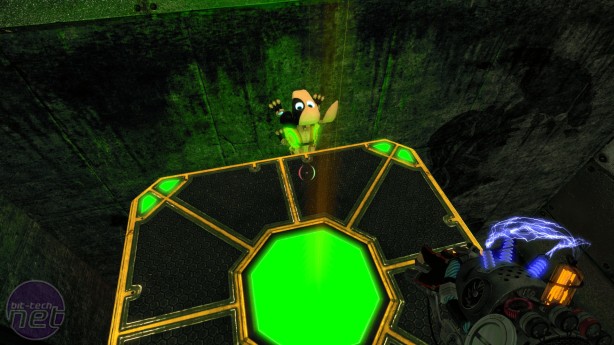
Magrunner: Dark Pulse Review
That failure to innovate in terms of world-building is also represented in the art style. The initial test-chambers are beautiful creations, all vibrant colours, clean lines and smooth curves. Visually they're even more inventive than Portal's, and demonstrate that Unreal Engine 3 can still kick out some mighty pretty environments seven years on from its release. Post-Cthulhu, however, you descend into what seems to be an older, more run down area of the complex. This gradual degradation of your surroundings is logical, but not very interesting. Running through an environment of brown metal and grey concrete is the number one cause of narcolepsy in games journalists, and by its midpoint Magrunner was causing more than a few nods of the head.While the art style falls into drudgery fairly early on, the puzzles themselves remain engaging throughout. Dax is equipped with a glove which enables him to reverse the magnetic polarity of certain objects within the world, with the polarity represented by red and green lights that appear on the objects in question. The in-game magnetism actually works in the opposite way to how real-world magnetism works, with identical colours attracting each other and opposing colours repelling one another, but for the sake of solving logic puzzles, matching colours together makes more sense. A simple puzzle might require you to mantle an obstacle which is higher than you can reach, so you place two cubes on top of one another, stand on top and give them opposing polarities. This will send you shooting upwards, enabling you to jump over the obstacle.
The number of objects you can use the mag-glove on is limited, but the game uses them in impressively inventive ways. The puzzles take a particularly large leap in ingenuity once you get access to Newton, a magnetic object which you can place almost anywhere in the world, shaped like your pet robot dog. So if you come across a magnetic platform with no obvious way of lifting it, placing Newton on the floor with an opposing polarity will push the platform up, whereas placing him on the wall above the platform with a matching polarity will drag the platform up.
The difficulty rises fairly steadily, with some truly vast puzzle rooms cropping up in the latter half of the game. Unfortunately, a fair chunk of this added difficulty emerges from the puzzles being more fiddly rather than requiring more logical deliberation. Any puzzle that requires a timed jump is guaranteed to be a right pain, and those which include platforms that travel in a ring or manoeuvring multiple platforms at once has a good chance of inducing some moderate cursing.
But Magrunner's central issue is, and was always going to be, that it takes two unoriginal ideas and merges them together instead of coming up with something entirely of its own. The result of this conceptual collision is certainly enjoyable, but it needs to be flawlessly executed to match up with its unique source material, and although Magrunner weaves these wildly opposing ideas together well, the result is nevertheless just a little bit B-movie.
-
Overall70 / 100


MSI MPG Velox 100R Chassis Review
October 14 2021 | 15:04












Want to comment? Please log in.